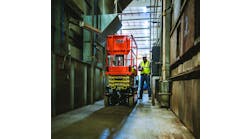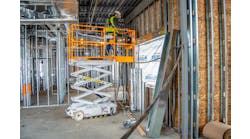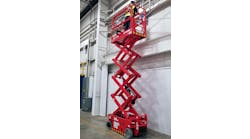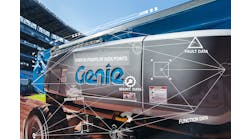For RER’s January edition, we interviewed more than 50 rental companies and rental industry suppliers and will present several of them in RER Reports. Here Benno Jurgemeyer, CEO of Sunstate Equipment shares his expectations for the coming year.
RER: How was 2012 for Sunstate in general terms?
Jurgemeyer: Our recovery started the summer of 2011 and the positive trends continued throughout 2012. We have achieved strong double-digit revenue growth — north of 20 percent — for 2012 and, despite the challenging rate environment, we are developing some respectable margins as well.
What do you expect for 2013?
We are very optimistic about 2013 and expect similar growth to what we achieved in 2012. Our optimism for the most part is based on the opportunities we are seeing in the market place, in both the construction and non-construction business segments. We are seeing a lot of new construction breaking ground and more of these projects are coming from the private sector. We are also seeing evidence that the residential market is turning the corner, a good sign that the general economy is making progress. We have been outpacing the economic forecasts for two years, which is consistent with the theory that rental is increasing its share.
What are your customers telling you? Are they optimistic or pessimistic? Are they going forward with projects or hesitant?
There is still a mix of feedback in the market place. Margins are still very tight for most contractors. So even if there is more work, it is still a battle for many. But there is also an undercurrent of optimism in the private sector. We see home builders buying dirt and preparing for an upswing in demand and pricing. We are seeing commercial buildings that were left half completed during the recession picked up by new owners and under development again.
What kind of projects look likely to happen in your area or areas?
Part of the reason for our optimism is the greater variety of projects we are anticipating in 2013. It is developing into a much better mix. The projects include solar plants, baseball stadiums, auto malls, distribution centers, more hospitals, apartments, etc. The new projects are in addition to many large projects already started in 2011-12 that will still run well into or through 2013.
How do you see various market segments for 2013, i.e., industrial, energy, nonresidential construction, residential, roads, bridges, schools, hospitals?
The answers vary market to market. But in general we see continuing opportunity in the energy sectors with oil and gas, solar and wind. We also see the industrial or non-construction sectors as some of our biggest areas of opportunity. In some markets the infrastructure sector is likely to slow down a bit given the lack of state and federal funding. But other sectors will be picking up or continuing; including retail, schools and healthcare.
Will you plan to add to your inventory in 2013?
We added a lot of fleet in 2012, and expect to add at least that much again in 2013.
Anything you can share about strategies you have planned for 2013?
Most of the capital we put to work will be needed to support the demand in our existing footprint, but we will start to expand geographically again in the near future. We are constantly investing in and improving our processes and systems. This is the backbone of the great customer service we consistently provide, and critical for increasing our efficiencies and margins at the same time.
What potential concerns do you have?
We believe the economy will continue its slow but steady recovery, and that the next four to five years are likely to provide great opportunity for the equipment rental industry. The increasing cost of equipment will be a longer term challenge for rental industry economics (longer because it will take years to increase the average cost of the fleet). At the same time it will also make it more challenging for customers to justify the investment in the higher cost machines; which should translate to greater reliance on the rental option.
Anything else you’d like to share or add?
Rental rates continue to be a challenge for the industry, but progress is being made. Most importantly there is better management information in the market place, which should help to drive better decisions by all the rental players. We not only need to recover some of the pricing lost during the recession, but we will need to compensate for the increase in fleet cost as the averages push higher in the coming years.





